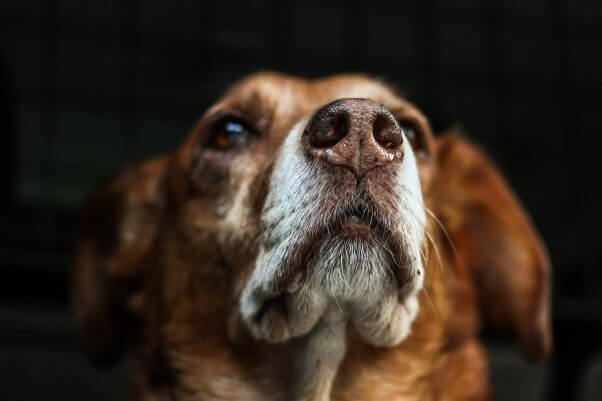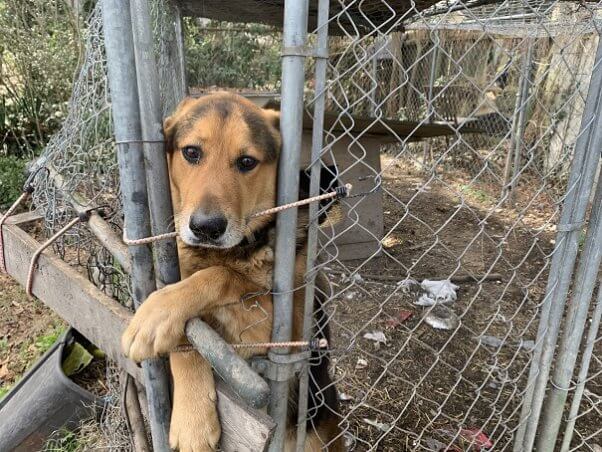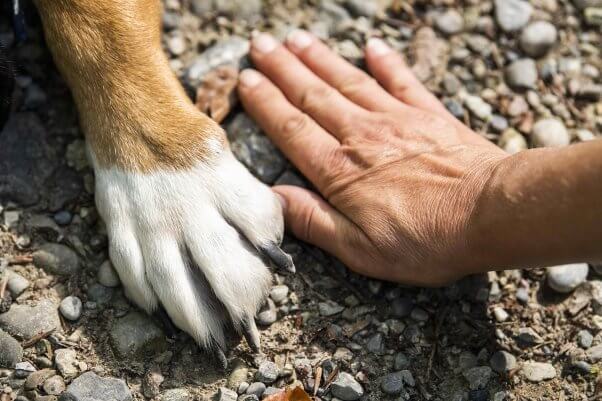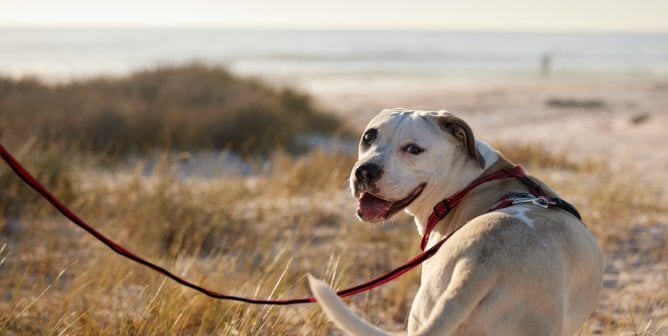No one likes to see white fur covering more and more of their beloved dog’s face or notice that their favorite feline isn’t moving as quickly as she used to. Acknowledging that our animals are getting older can be distressing and bring up uncertainties about whether we’re keeping them as healthy and comfortable as possible. Animals only need to be around six or seven years old to reach “senior” status, and knowing what to look for and how to respond can help us provide them with excellent care from midlife through their final years. Here are the tips that veterinarians and animal-aging experts want every guardian to have when caring for a senior animal.
‘Old Age Ain’t No Place for Sissies’ –Bette Davis
Picture this: You’ve decided to retire in an exotic foreign country even though you don’t speak the language. A friendly native there helps you, but the language barrier makes communication difficult. Over the years, you start to get some aches and pains, and eventually, everything hurts. You have a hard time getting comfortable. You can’t visit a doctor because you can’t drive, and your caregiver doesn’t notice that you need medical attention. But your joints ache so much that it can be hard to stand up and walk. Sometimes you trip and fall, which makes everything hurt more. You used to love to be outdoors or to go for a run, but now, that’s impossible. You can hardly keep your balance.

Your vision and hearing are also getting worse, and the world is becoming a place of blurry images and odd, muted sounds. Lying around and sleeping all the time is boring, and the throbbing pain in your joints keeps you from sleeping properly anyhow. Your liver function is declining, and you often feel queasy but can’t tell anyone. It’s tough to “hold it” long enough to get your achy, stiff body to the bathroom. You have frequent accidents and feel embarrassed and guilty because your caregiver will have to clean it up.
You wish you could tell him all the things that are bothering you. Besides the joint pain, poor eyesight and hearing, and digestive problems, you also have an infected tooth that hurts, an itchy rash on your leg, an ingrown toenail, and a strange heavy feeling in your chest. Sometimes you can’t catch your breath and struggle to fill your lungs. No one notices how much your health has deteriorated and how poor your quality of life has become. Every morning, you wake up and have to face the relentless pain again…

That scenario describes the daily reality for chained dogs and other older animals with inattentive owners. Without the benefit of verbal communication, guardians must become increasingly vigilant in monitoring animal family members for anything unusual that could signal a deeper issue.
Respect Your Elders (and Snuggle With Them, Too)
As animals begin to age, somewhere between years six and nine depending on their size, their bodies undergo many changes that can sneak up on guardians if they aren’t paying close attention. One of the easiest ways to keep tabs on your best friend’s health is also one of the most enjoyable: Touch and pet them every day. Not only to show them affection and reassure them that you care, but also to check them over thoroughly. Peek into their mouths and ears, check under their tails, part their fur, examine their feet (including pads and nails), and run your hands over their entire body. Don’t assume that a strange new behavior or symptom is “just old age”—it could be indicative of something that’s making your animal pal uncomfortable or may be life-threatening. If something is amiss, every second counts.
Not Just for Golden-Agers: Symptoms That Always Need Immediate Attention
If you notice any of these warning signs of underlying health problems, take your companion to the veterinarian as soon as possible.
- Behavior: lethargy, excessive sleepiness, depression, withdrawal, lack of interest, whimpering, panting, grumpiness, nipping, aggression, confusion/disorientation, walking in circles
- General: bloated/distended belly, muscle atrophy, sudden weight loss or weight gain, emaciation, obesity, dehydration (skin does not spring back when pinched up), hunching over, hanging head, increased water intake, increased urination, notably diluted or concentrated urine
- Coat: matted fur, oiliness, coarseness, bad odor, excessive shedding, dander, dullness, hair loss, patchiness
- Skin: redness, rawness, oozing, hotspots, lumps, warts, scabs, parasites (fleas, ticks, etc.), itchiness
- Skeleton: stiffness, difficulty getting up or walking, inability to groom, limping, limited range of motion, lack of coordination, abnormal placement or positioning of the limbs, abnormal wearing of the toes
- Eyes: squinting,cloudiness, filminess, wateriness, dryness, itchiness (pawing), discharge, swelling, discoloration, redness, showing third eyelid, poor eyesight
- Ears: head shaking, head tilting, itchiness, scabbiness, matted fur, foul smell, redness, crustiness, black or pus-like discharge (inside or outside), thickening of flaps, hematoma, loss of hearing
- Nose: discharge, scabbiness, cracks, crustiness, congestion, blocked
- Mouth: bad odor, tartar/plaque on teeth, redness of gums, receding gums, pale gums, broken or cracked teeth, loose teeth, excessive salivation/drooling, difficulty chewing/swallowing
- Respiratory system: wheezing, labored breathing, irregular breathing, shallow breathing, rapid breathing, coughing, gagging, reverse sneezing, congestion, open-mouth breathing
- Digestive system: loss of appetite, diarrhea, loose stools, bloody stools, black stools, straining, constipation, vomiting
- Anus/Genitals: redness, discharge, swelling, unusual odor, excessive licking, chewing, scooting
- Feet: overgrown or ingrown nails, split nails, lick granuloma (lesion), paw abrasions, tenderness, unusual defensiveness when feet are touched
Many of these symptoms are caused by conditions that are easily treatable. Getting your animal to a vet swiftly will ease their discomfort and put them on the road to recovery.
Caring for a Senior Animal: The Dos and Don’ts
- Do elevate your animal’s food and water bowls to eliminate the need to bend and crouch and to alleviate neck and back pain.
- Do walk, play with, and exercise your companion daily. Movement and activity are good for every system in the body. Keep their minds active, too, with games, food puzzles, or scavenger hunts.
- Do make sure that he or she gets more frequent bathroom breaks and that your cat has access to a clean litterbox at all times.
- Do keep animals warm in winter (such as with coats, sweaters, and heating pads) and cool in summer (think children’s swimming pools, fans, and air conditioning).
- Do help them get to their feet and lie down by covering hardwood, tile, or vinyl flooring with rubber-backed rugs or yoga mats to provide traction. For outdoor decks or stairs, apply non-skid paint.
- Do provide animal family members with thick, comfortable, quality bedding to cushion aging joints and stiff muscles.
- Do give your dog or cat a safe, quiet, and peaceful place where they can escape household noise.
- Do consider using ramps at home and for the car. If possible, spare petite seniors, small dogs, dogs with long backs, and puppies from having to use stairs or jump on and off of beds and sofas. Anyone can put together this DIY ramp for $30, and handy folks can make a slightly more advanced version.
- Do have your veterinarian do a blood panel once a year, even if you think nothing is wrong.
- Don’t assume that health problems are just an inevitable symptom of old age. Seek professional advice from a trusted veterinarian.
- Don’t let your animal jump out of your vehicle or off the couch or bed if you don’t have a ramp. Help them get up or down using an assisted-lifting harness if needed.
- Don’t put your animal through painful surgeries or other procedures that have little chance of prolonging life, that come with a lengthy or difficult rehabilitation, or that will result in a poor quality of life (e.g., amputating a leg in an attempt to cure bone cancer).
When the Time Comes, Know When to Say ‘When’ on Your Animal’s Behalf
Some conditions are not treatable and cause considerable discomfort. If you believe that your animal is in pain or they have been diagnosed with a terminal illness, don’t prolong their agony because the decision to seek euthanasia is difficult. Put your animal’s needs first. Our animals deserve a dignified, peaceful death—BEFORE things become unbearable. When in doubt, consult with someone whose judgment you trust. Get a second opinion (and a third if you need to), but if your gut tells you that your animal is suffering, don’t delay. Arrange for euthanasia as quickly as possible, preferably at home where your animal family member will be the most comfortable and surrounded by loved ones. Having a plan in place well in advance can alleviate stress and help you focus on your best friend when they need you the most.

For further reading, we recommend Good Old Dog: Expert Advice for Keeping Your Aging Dog Happy, Healthy, and Comfortable by Dr. Nick Dodman.
As an Amazon Associate, PETA earns from qualifying purchases. If you buy something after clicking the Amazon links on this page, a percentage of the qualifying purchase will be donated to PETA and help us protect more animals from exploitation.
Text VEG to 73822 to get the latest vegan lifestyle tips, recipes, and urgent action alerts texted right to your phone.
Terms for automated texts/calls from PETA: https://peta.vg/txt. Text STOP to end, HELP for more info. Msg/data rates may apply. U.S. only.






